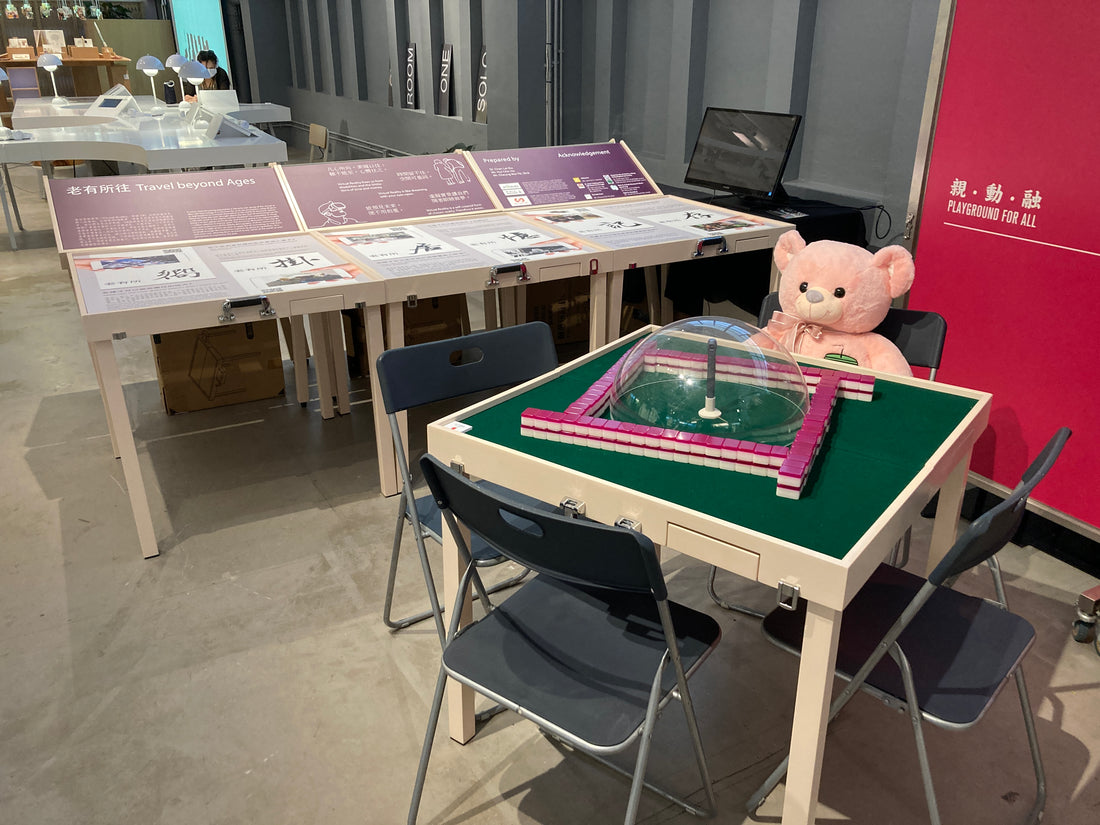
Mahjong x Popup
What mahjong could do with popups?
We know popcorn, pop-up books and cards, but popups for exhibitions, stores or even restaurants are pretty recent despite there is a long history of seasonal markets, weekend bazaars, trade fairs and expositions. These are not considered popups as they are held in designated places and often regular and with well advance planning and promotion. Popups today could mean something one-off, done in a very short time from setting up to running, and lasts for a short period of time. To the extreme, apart from popups, there are instant events like dances or concerts by flash mobs that bring total surprises to the people around and often spread virally via social media.
Popups cannot become popular and phenomenal before the arrival of new digital technology and the popularity of smartphones and social media. In the old days, it takes a long time for a show or a store to be organised, set up and promoted. Even the production of an advertising poster could take a week to draw, print and distribute. For businesses to build a loyal customer base and memorable brands, they had to stay in the same locations long enough to have an accurate address so that customers know where to find them.
Today, with website and social media, businesses can be searched and reached anytime even a person barely know their names or their products or services. People can also keep a good record of what they have seen and liked with their smartphone camera for later reference or for sharing with friends and peers. So, instead of waiting for customers to find them at a fixed location, businesses or organizations can now go out to reach and acquire their customers actively through popups. They can also use these opportunities to test out new ideas and products.
In Hong Kong with extreme land scarcity, popups are even more relevant. My first tech startup graduated from HK Science Park aTTempspace is exactly about popups as ways to better use the valuable temporary vacant spaces in the city. To meet the need for furniture, I made a giant set of A3 size mahjong to serve as seats, stands and props for popup concerts and shows. Recently I face a similar challenge again.
For popup shows, we need setup and installations to show and share content with the audience. Big brands have done roving exhibitions with containers and even vehicles to move to different places. For smaller shows, systems of panels and stands are needed. But after use for a short period, they all become waste. For this reason, people have been looking for more environmental ways of doing popups. Some solve the problem of using recyclable materials like paper, but their poor durability means they have to go back to mills and be crushed and re-constructed, which uses a lot of energy. Other buy reusable panels or systems but they could be pretty bulky and the cost of storing them is even higher than buying new sets next time. There are also people using banners over light stretchable subframe systems which are no good for hanging or placing things on and look too commercial while direct uses of painting easels which appear untidy and too ad hoc. There are also proprietary stick-and-panel systems, but the panels provided are pretty fragmented in size.
For the recent popup exhibition I mentioned, Glocal Mahjong has crossed over with a Hong Kong furniture brand, Hareody, to turn their foldable mahjong tables into a reusable exhibition system. I initially named it the Mahjo system.
The reason I start off with the mahjong table is that its square table top of about 80cm or even half of it is a good size for display. These tables can be folded to become compact boxes and neatly stored in stacks. With a special modified leg design, they can be half-open like pitched roofs and provide skewed surfaces perfect for reading. They also provide ergonomic worktops like easels for people to write and draw on. Furthermore, the standing edges of the table top not only frame the display panels nicely but also provide stop edges for books, drawings or objects displayed on top from falling. It may even be turned into a magnetic whiteboard for teaching and dropping notes on.
Of course, when they are laid flat, they can be used as tables and worktops. So they are not only good as a display system for popups but as a very useful multipurpose furniture for home if someone loves mahjong, reading, painting or even playing puzzles, monopoly or cards. For families with kids, it could be a teaching whiteboard or kids’ doodling surfaces.
If Swiss Army Knife means a wide variety of tools popping out from a compact pack, I hope one day, our “Hong Kong Mahjong table” means a very versatile popup furniture system in a compact box serving a wide range of different needs.
